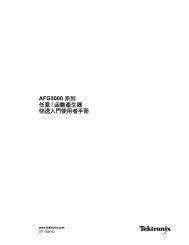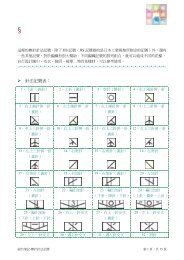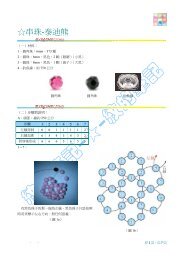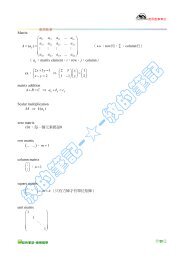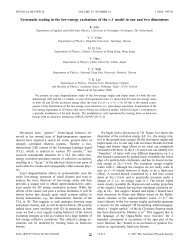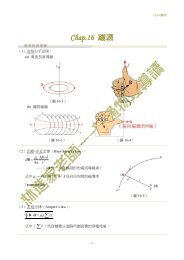Chapter 22 Materials Selection and Design Considerations
Chapter 22 Materials Selection and Design Considerations
Chapter 22 Materials Selection and Design Considerations
Create successful ePaper yourself
Turn your PDF publications into a flip-book with our unique Google optimized e-Paper software.
<strong>22</strong>.11 Material Requirements • W111<br />
<strong>22</strong>.11 MATERIAL REQUIREMENTS<br />
In essence, there are four basic components to the artificial hip: (1) the femoral<br />
stem, (2) the ball that attaches to this stem, (3) the acetabular cup that is affixed to<br />
the pelvis, <strong>and</strong> (4) a fixation agent that secures the stem into the femur <strong>and</strong> the cup<br />
to the pelvis. The property constraints on the materials to be used for these elements<br />
are very stringent because of the chemical <strong>and</strong> mechanical complexity of the<br />
hip joint. Some of the requisite material characteristics will now be discussed.<br />
Whenever any foreign material is introduced into the body environment, rejection<br />
reactions occur. The magnitude of rejection may range from mild irritation<br />
or inflammation to death. Any implant material must be biocompatible, that is, it<br />
must produce a minimum degree of rejection. Products resulting from reactions<br />
with body fluids must be tolerated by the surrounding body tissues such that normal<br />
tissue function is unimpaired. Biocompatibility is a function of the location of<br />
the implant, as well as its chemistry <strong>and</strong> shape.<br />
Body fluids consist of an aerated <strong>and</strong> warm solution containing approximately<br />
1 wt% NaCl in addition to other salts <strong>and</strong> organic compounds in relatively minor<br />
concentrations. Thus, body fluids are very corrosive, which for metal alloys can lead<br />
not only to uniform corrosion but also to crevice attack <strong>and</strong> pitting <strong>and</strong>, when<br />
stresses are present, to fretting, 7 stress corrosion cracking, <strong>and</strong> corrosion fatigue. It<br />
has been estimated that the maximum tolerable corrosion rate for implant metal<br />
alloys is about 0.01 mil per year ( mm per year).<br />
Another adverse consequence of corrosion is the generation of corrosion products<br />
that are either toxic or interfere with normal body functions. These substances<br />
are rapidly transported throughout the body; some may segregate in specific organs.<br />
Even though others may be excreted from the body, they may nevertheless still persist<br />
in relatively high concentrations because of the ongoing corrosion process.<br />
The bones <strong>and</strong> replacement components within the hip joint must support forces<br />
that originate from outside the body, such as those due to gravity; in addition, they<br />
must transmit forces that result from muscular action such as walking. These forces<br />
are complex in nature <strong>and</strong> fluctuate with time in magnitude, in direction, <strong>and</strong> in<br />
rate of application. Thus, mechanical characteristics such as modulus of elasticity,<br />
yield strength, tensile strength, fatigue strength, fracture toughness, <strong>and</strong> ductility are<br />
all important considerations relative to the materials of choice for the prosthetic<br />
hip. For example, the material used for the femoral stem should have minimum<br />
yield <strong>and</strong> tensile strengths of approximately 500 MPa (72,500 psi) <strong>and</strong> 650 MPa<br />
(95,000 psi), respectively, <strong>and</strong> a minimum ductility of about 8%EL. In addition, the<br />
fatigue strength (for bending stresses that are fully reversed [Figure 8.17a]) should<br />
be at least 400 MPa (60,000 psi) at 10 7 cycles. For the average person, the load on<br />
the hip joint fluctuates on the order of 10 6 2.5 � 10<br />
times per year. Ideally the modulus of<br />
elasticity of the prosthetic material should match that of bone. A significant difference<br />
can lead to deterioration of the surrounding bone tissue <strong>and</strong> implant failure,<br />
which requires a second surgery <strong>and</strong> another prosthetic implant.<br />
Furthermore, since the ball-<strong>and</strong>-cup articulating surfaces rub against one another,<br />
wear of these surfaces is minimized by using very hard materials. Excessive<br />
<strong>and</strong> uneven wear can lead to a change in shape of the articulating surfaces <strong>and</strong><br />
cause the prosthesis to malfunction. In addition, particulate debris will be generated<br />
as the articulating surfaces wear against one another; accumulation of this debris<br />
in the surrounding tissues can also lead to inflammation.<br />
�4<br />
7 Fretting is a combination of corrosion <strong>and</strong> wear in which corrosion produces small debris<br />
(generally oxide particles) that increases the friction <strong>and</strong> induces greater abrasion.



